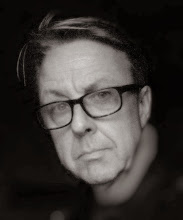 Released in 1954, Disney's 20,000 Leagues Under The Sea, based on Jules Verne's futuristic novel, was directed by Richard Fleischer, the son of Disney's cartoon rival Max Fleischer. Filmed in Cinemascope with a stereo soundtrack, it featured a top notch cast including Kirk Douglas, James Mason, Peter Lorre and Paul Lukas; plus cinema's coolest submarine - the Nautilus.
Released in 1954, Disney's 20,000 Leagues Under The Sea, based on Jules Verne's futuristic novel, was directed by Richard Fleischer, the son of Disney's cartoon rival Max Fleischer. Filmed in Cinemascope with a stereo soundtrack, it featured a top notch cast including Kirk Douglas, James Mason, Peter Lorre and Paul Lukas; plus cinema's coolest submarine - the Nautilus.Distinguished British actor, James Mason gives a sympathetic portrayal of the tormented Captain Nemo while a pumped-up Kirk Douglas fills out the red-striped teeshirt of Ned Land, the hot-headed, harpoon hurling hero. Many of the potent images from 20,000 Leagues Under The Sea have understandably become
 iconic, from the distinctive diving suits to the nuclear powered Nautilus and its attack by a giant squid. The thrilling opening sequence showing a sea-borne assault on a battleship, with the Nautilus' glowing green 'eye' powering through the waves is particularly effective. Another stunning scene frames the Nautilus passing gracefully through undersea caverns accompanied by Bach's Toccata and Fugue, played by Captain Nemo.
iconic, from the distinctive diving suits to the nuclear powered Nautilus and its attack by a giant squid. The thrilling opening sequence showing a sea-borne assault on a battleship, with the Nautilus' glowing green 'eye' powering through the waves is particularly effective. Another stunning scene frames the Nautilus passing gracefully through undersea caverns accompanied by Bach's Toccata and Fugue, played by Captain Nemo.Established Disney regular, Paul J. Smith (1906 - 1985) composed the stirring score for 20,000 Leagues Under The Sea. A novelty song was included for Kirk Douglas' character to croon called
 "A Whale of A Tale" composed by, but uncredited to Al Hoffman and Norman Gimbel. The song is repeated throughout Smith's score as a leitmotif for Ned.
"A Whale of A Tale" composed by, but uncredited to Al Hoffman and Norman Gimbel. The song is repeated throughout Smith's score as a leitmotif for Ned.Over 50 years after its initial release, 20,000 Leagues Under The Sea still remains a great adventure story and one of Disney's most mature and accomplished live action features.












